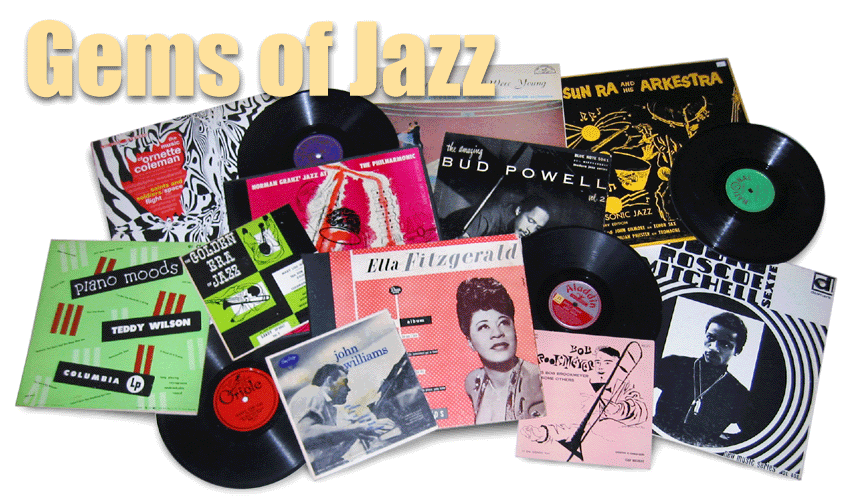When you think of romantic music, you think of ... baritone saxophone? Well, maybe not. But you might, if you think of Harry Carney, Duke Ellington's long-time bari sax player.
Carney came from Boston, as did Johnny Hodges, where he and the Rabbit were childhood friends. Harry had just turned seventeen when Ellington heard him playing with a local band and, after obtaining permission from Carney's parents, took him on the road with his orchestra. Carney played clarinet with the Duke at first, but soon was featured on the big saxophone. He never looked back, and he never left Ellington's sax section. He is, by most estimations, the father of modern baritone saxophony.
Carney only recorded a few times as a leader, and only issued two LPs in his lifetime. The one Gems is posting here comes from the mind of impresario and producer Norman Granz, another of the concept recordings that were so successful for him and his musicians. It features Carney in a ballad setting with a number of excellent jazz players and a conventional but supportive string section. No credit is given for the arrangements, but they were probably done by one of Granz's many studio arrangers – maybe Howard Lucraft or Frank DeVol. The mood is intended to be romantic, no doubt a ploy to rope in the unwitting record buyer.
But the results are far better than you might expect. This is a stunning record. There are many solos from Harry, plus some fiddling by Ray Nance and a generous dose of fine clarinet playing from Jimmy Hamilton. The material is familiar (with the exception of the two Carney originals), but the treatment breathes new life into it. You'll be sorry if you pass this one up, brother!
I found this LP many years ago at one of the first record sales held by the radio station where I work. Why someone would dump this gem is beyond me, but I'm certainly glad they did, and now you will be too. As always, these files were ripped from the original vinyl with only a very minor cleaning of random pops and clicks.
Moods for a Girl and Boy
Harry Carney and His Orchestra
Harry Carney, bar, bs cl; Ray Nance, tp, vi; Tony Miranda, fr hn; Leroy Lovett, p; Billy Bauer, g; Wendell Marshall, b; Louie Bellson, d; unk. string section
New York, NY; December 14, 1954; Verve MG2028
1. I Don't Stand a Ghost of a Chance
2. Take the A Train
3. We're in Love Again (Carney)
4. Chalmeu (Carney)
5. Moonlight on the Ganges
6. It Had to Be You
7. Fantasy
9. I Got It BadFind it here: http://www.mediafire.com/?7qchshh7dthvbp5










